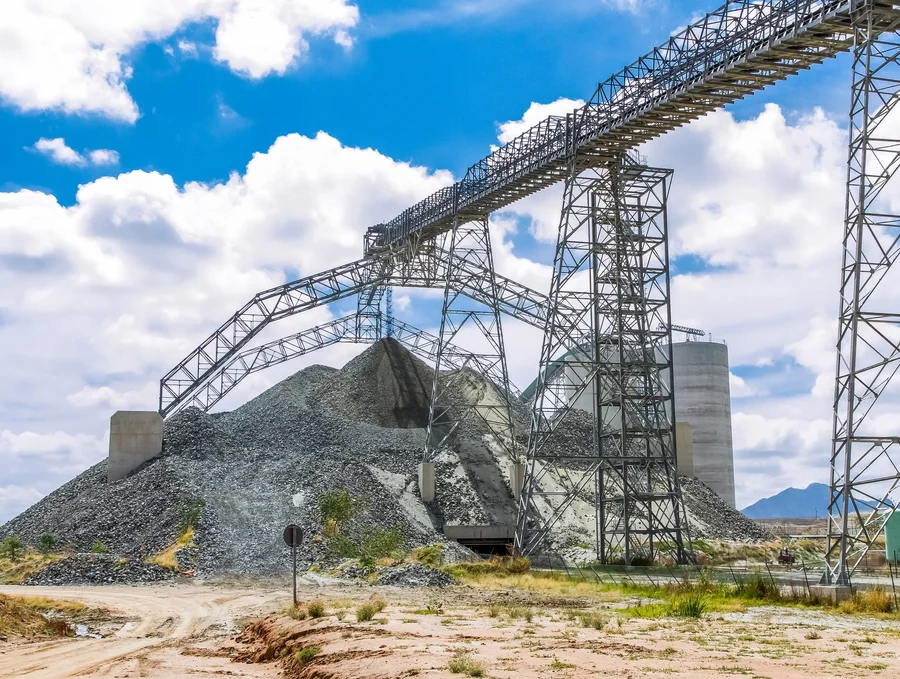The rise of electric vehicles is driving South Africa’s platinum industry into permanent decline, as demand for the metal drops.
South Africa, the world’s leading platinum producer, has seen a steady decline in its output since hitting a high of 5.3 million ounces in 2006.
As the EV industry gains momentum, the demand for platinum, which is used in catalytic converters, has been hit hard.
Platinum, once commanding more than US$2,000 an ounce, has seen its value drop 13% since last year to US$939 per ounce.
This is largely due to the rise of battery-powered vehicles, which don’t require catalytic converters – a crucial use for platinum in traditional combustion engines.
Catalytic converters account for 40% of the platinum demand and with the auto sector increasingly shifting to electric vehicles, the market has taken a significant hit.
Northam Platinum is one of South Africa’s biggest players in the industry and its financial results reflect the downturn.
Its headline earnings per share plummeted by 81.6% this year, dropping from 24.15 rand to 4.45 rand. Prices of other precious metals used in catalytic converters, like palladium and rhodium, have also fallen drastically.
Palladium, down 40% last year, continues to drop, while rhodium, once trading near US$30,000 an ounce, now stands at around US$4,750 an ounce.
Shares in South Africa’s platinum sector have also taken a hit, with Northam’s stock down by 8.2% at the end of last week.
These drops reflect the broader struggles facing the sector as it navigates a future where electric vehicles dominate the auto industry, squeezing out the demand for metals used in internal combustion engines.
Production declines expected to continue
Platinum production in South Africa, already on a downward trend, is projected to fall further. In 2006, output reached 5.3 million ounces, but that figure has since dwindled.
CEO Paul Dunne predicts that South Africa’s platinum production will drop by 10% over the next five years, from 3.9 million ounces to roughly 3.5 million ounces by 2029. This decline is compounded by ageing mining infrastructure and a lack of investment in new mines.
“The asset base is depleting,” Dunne said, highlighting how mines naturally run down over time.
“This will exacerbate the natural depletion of South Africa’s ageing shafts.” The depletion is happening faster than the industry can cope with, as low platinum prices and dwindling demand make new investments unattractive to stakeholders.
Dunne’s company, Northam, is focusing on stabilising its own production at around 1 million ounces annually. This is despite producing just under 900,000 ounces in the past year.
In an attempt to maintain production levels, Northam has ramped up operations at its Eland mine, acquired in 2017. However, with little investment across the broader sector, South Africa’s platinum output could fall by 500,000 ounces every five years, Dunne estimates.
Future prospects for South Africa’s miners
As South Africa’s platinum industry declines, it echoes the fate of the nation’s once-dominant gold mining sector.
At its peak, South Africa was the world’s largest gold producer, but now ranks 12th globally. The platinum sector, once a major contributor to foreign currency earnings and a source of over 181,000 jobs, is following a similar trajectory.
Impala Platinum CEO, Nico Muller, described the outlook as grim, noting that it is “highly improbable” that new mines will be developed in the country, given the current economic conditions.
The problem is not just a result of falling metal prices, but also the high operational costs associated with South Africa’s deep, labour-intensive mines.
These older mines are costly to maintain and lack the modern mechanisation seen in other countries, making them even less viable in a market where prices continue to fall.
As battery electric vehicles become the norm, the once-thriving platinum industry in South Africa will continue to face significant challenges.
Without investment in new technologies or diversification of the metal’s use, the decline seems set to mirror the nation’s diminishing gold sector, with long-term implications for the country’s economy and its workers.



